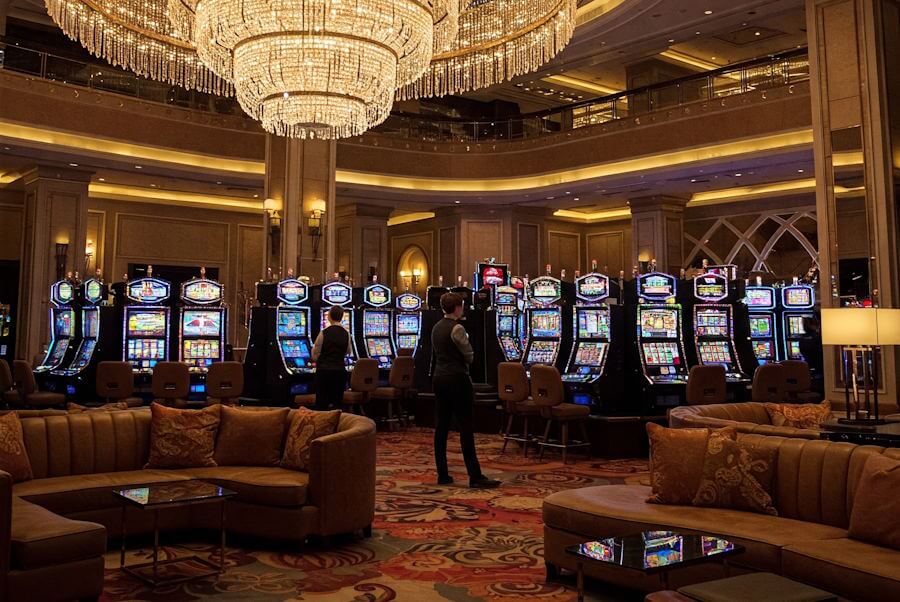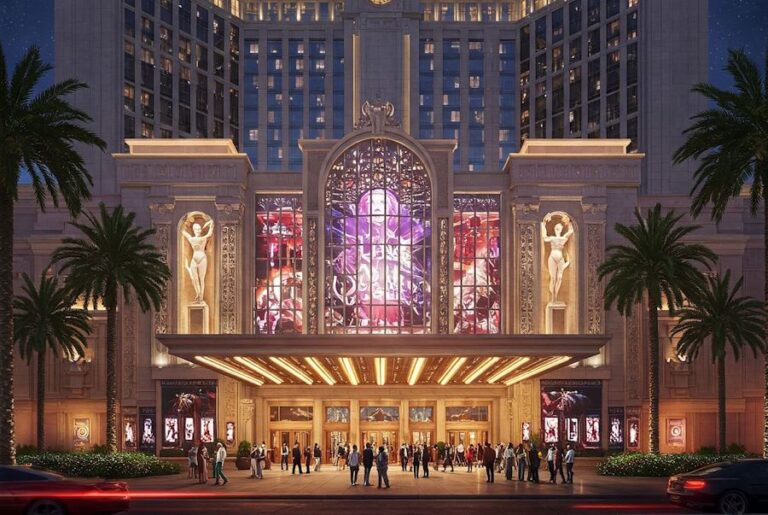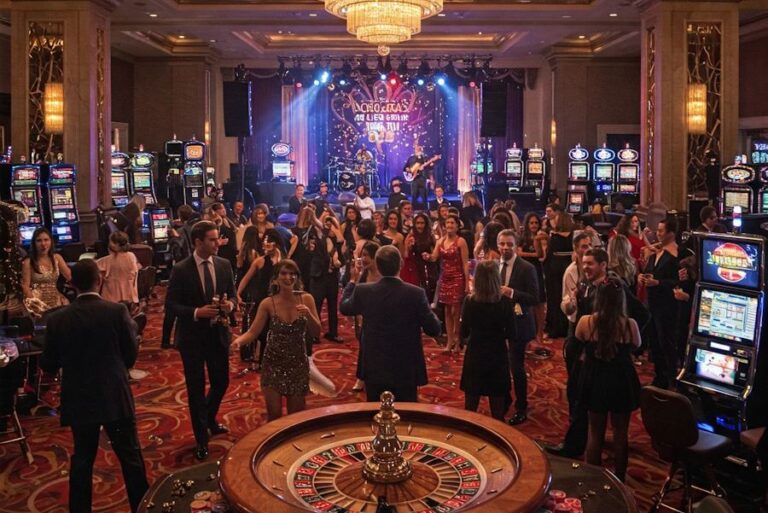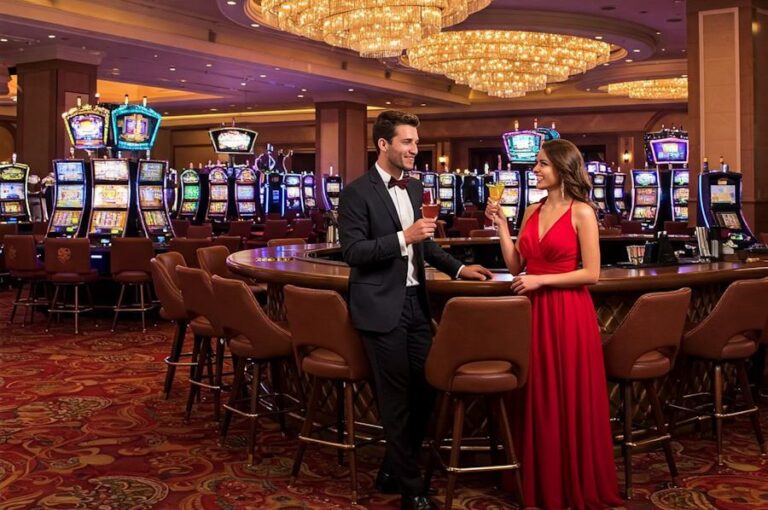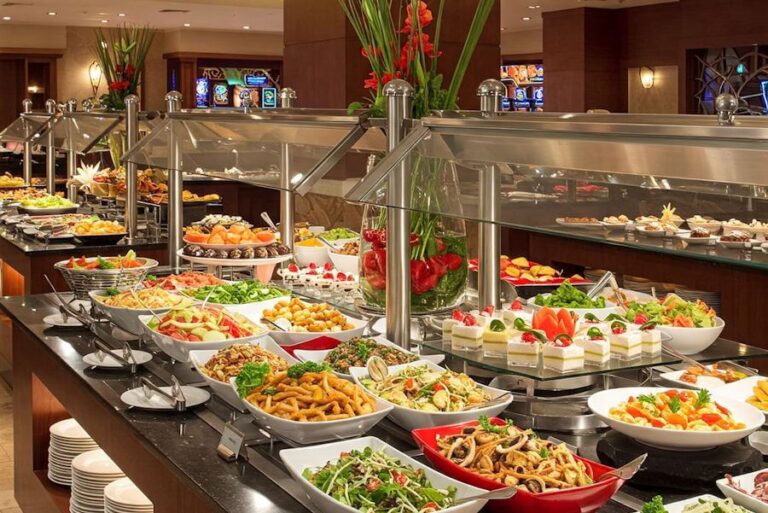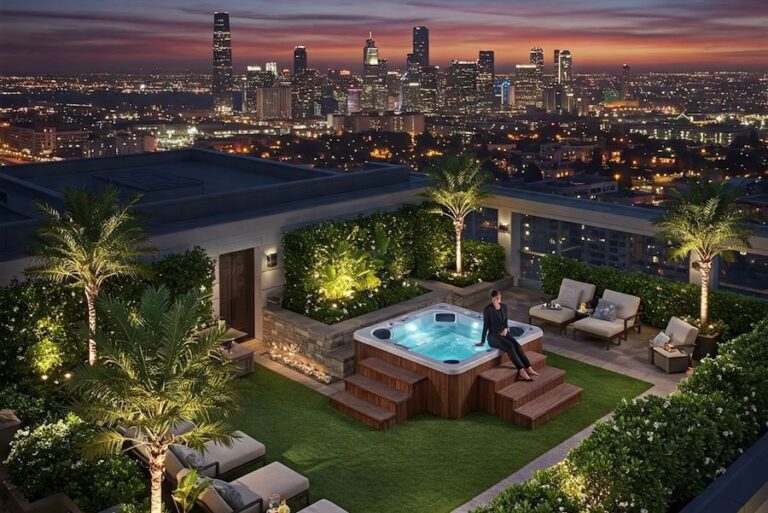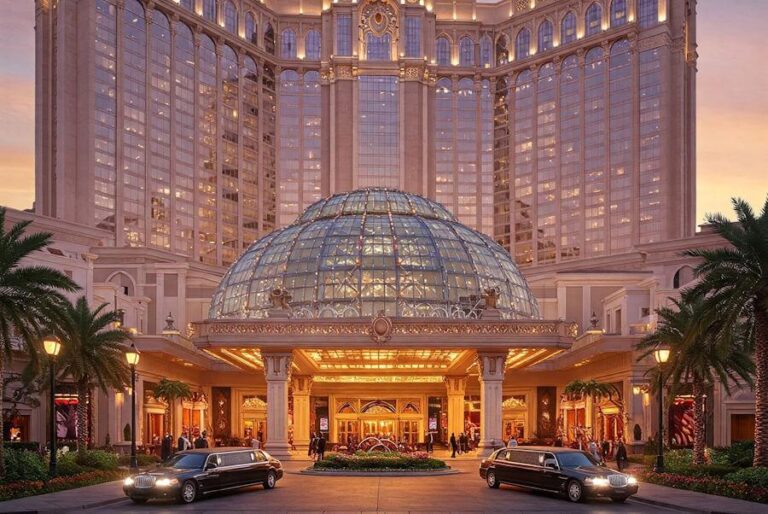The Psychology of Casino Hotel Interiors
Introduction to Casino Hotel Design
Casino hotel design represents a unique intersection between architectural aesthetics and psychological insights, aimed at crafting environments that captivate and engage guests. The strategic combination of these elements is essential for creating immersive experiences that encourage visitors to linger, explore, and willingly partake in the various offerings of the space. As such, understanding the nuances of ambiance, aesthetics, and functionality is crucial in the architectural planning and execution phases of casino hotel interiors.
The ambiance of a casino hotel is meticulously curated to evoke particular emotions and behaviors in guests. Factors such as lighting, color schemes, and spatial arrangements play significant roles in setting the mood and guiding patron interactions within the facility. For instance, the use of warm colors and soft lighting can create inviting environments, while brighter hues may energize and motivate guests. These sensory elements can influence choices, from spending money to extending the duration of their stay.
Historically, the design of casinos has evolved from simple gaming halls to lavish environments that emphasize luxury and escapism. Early establishments offered a straightforward experience, focused primarily on the act of gambling. In contrast, contemporary casino hotels serve as multifunctional destinations, integrating casinos with entertainment, dining, and accommodation. This evolution reflects a growing understanding of consumer psychology, where the design is driven not just by aesthetic appeal, but also by the underlying motivations and behaviors of guests.
As this blog progresses, we will delve into the psychological principles that underpin the design of casino hotels, exploring how these insights contribute to the creation of spaces that are not only visually stunning but also strategically engineered to enhance patron engagement and satisfaction.
The Role of Color in Casino Environments
The selection of colors in casino hotel interiors is a pivotal factor that influences the mood and behavior of guests. Color psychology demonstrates that various hues elicit distinct emotional responses, which can significantly affect how patrons engage with the hotel environment. For instance, warm colors such as red and orange are often associated with excitement and energy, making them popular choices in casino design. These colors are thought to stimulate feelings of urgency and encourage guests to spend more time—and money—in gaming areas.
Conversely, cooler colors like blue and green tend to evoke calmness and relaxation. These hues can be effectively integrated into lounge areas and hotel rooms to provide a soothing retreat from the high-energy casino floors. The strategic use of color can thus create a layered emotional experience, allowing guests to enjoy both excitement and relaxation within the same space.
Prominent casino hotels employ these psychological color principles to enhance their interiors. For example, the Bellagio in Las Vegas utilizes a blend of vibrant golds and deep reds to evoke luxury and excitement, which aligns with the casino’s strategic goal of keeping patrons engaged. Similarly, The Venetian incorporates rich shades of blue and gold, evoking the essence of the canals of Venice while promoting a sense of opulence and tranquility.
Furthermore, the interplay of colors can affect guests’ behavior in subtle ways. Research indicates that color combinations can influence the amount of time spent at gaming tables or in restaurants, thereby impacting overall spending tendencies. In this context, casino designers must take into account not only the aesthetic appeal of color choices but also their psychological implications, ensuring that guests’ experiences are both captivating and conducive to spending. By understanding and applying the principles of color psychology, casino hotel interiors can create mesmerizing environments that resonate with guests on a deeper emotional level.
Lighting: Creating the Right Atmosphere
Lighting plays a pivotal role in shaping the overall atmosphere of casino hotels, directly impacting guests’ moods and experiences. By carefully integrating various types of lighting—ambient, task, and accent—designers can create enchanting spaces that encourage visitors to linger longer. Ambient lighting serves as the foundational light source, providing uniform illumination throughout the space. It helps to establish a warm and inviting environment, enticing guests immediately upon entry. Natural light, when incorporated, can enhance this effect, fostering a sense of openness and vitality.
Task lighting focuses on specific areas, such as gaming tables or lounges, ensuring that functional spaces are well-lit for optimal engagement. This type of lighting is crucial as it aids in the usability of the environment, allowing guests to enjoy their gaming experiences without hindrance. In contrast, accent lighting serves to draw attention to particular design elements, such as artwork or architectural details, creating visual interest and depth. By highlighting these features, accent lighting can evoke emotions tied to luxury and excitement, characteristics often associated with casino environments.
The psychological effects of lighting are further influenced by aspects such as brightness and color temperature. Brighter lighting is typically linked to increased energy and alertness, which is especially beneficial in areas where guests are engaged in gaming activities. Conversely, softer, warmer lighting can evoke feelings of relaxation and comfort, particularly in lounges or dining areas. Furthermore, directional lighting—whether focused or dispersed—can guide guest navigation and influence their behavior, encouraging exploration within the casino hotel. By skillfully employing these lighting types and understanding their psychological impacts, designers can create captivating atmospheres that foster prolonged engagement and an unforgettable experience for guests.
Spatial Layout and Flow: Guiding Guest Behavior
The spatial layout and flow of casino hotels play a crucial role in shaping guest experiences and influencing their behavior within these environments. By understanding the psychological impact of space arrangement, designers can create pathways that guide guests toward gaming areas, restaurants, and entertainment options, thereby enhancing their overall engagement. One of the key factors in this design strategy is the creation of well-defined pathways. These pathways not only facilitate movement but also ignite curiosity, encouraging guests to explore different areas of the hotel. Broad walkways, strategically placed signage, and open areas can help to lessen any feelings of confusion, making guests feel more comfortable navigating the space.
Sightlines are another essential component of spatial design. Clear sightlines can enhance the visibility of gaming areas and attractions, drawing guests’ attention and directing them toward focal points within the space. An unobstructed view of vibrant gaming activities, for instance, can entice guests to move closer, promoting active participation. The use of light, color, and signage can further enhance sightlines, creating a dynamic and inviting atmosphere that appeals to guests psychologically.
Moreover, zoning practices, which involve designating specific areas for particular activities, help in managing guest interactions and experiences. For example, separating gaming sections from dining areas can create distinct environments that cater to varying moods and behaviors. This intentional zoning not only fosters a sense of organization within the casino hotel but also encourages guests to engage with each designated area more fully. Each zone can be designed with its own aesthetic, music, and ambiance, further enhancing the psychological experience and making each visit memorable. Effective spatial layout and thoughtful flow within casino hotels not only guide guest behavior but also create an immersive experience that keeps them engaged and returning for more.
Comfort and Luxury: Enhancing Guest Experience
In the realm of casino hotel interiors, the interplay between comfort and luxury plays a pivotal role in shaping the guest experience. By meticulously curating the ambiance through thoughtful furniture choices, material selections, and intricate design details, casino hotels can evoke feelings of opulence and ease. This combination is not merely aesthetic; it has profound psychological implications that influence guests’ perceptions and behaviors.
Furniture selection is crucial. Plush seating areas, high-quality beds, and ergonomically designed chairs not only provide physical comfort but also signal a sense of luxury. When guests are surrounded by items that prioritize their physical well-being, they are likely to experience heightened emotional satisfaction. This comfort can translate into longer stays, increased time spent on the premises, and ultimately, higher spending within the casino’s services and recreational offerings.
Material choices significantly enhance the perceived luxury of a space. Using natural materials such as wood and stone, combined with soft fabrics and metals, can create an inviting atmosphere that resonates with authenticity and sophistication. The tactile and visual richness of these materials enhances the sensory experience, making guests feel more at ease and privileged. The atmosphere created by such elements leads guests to associate their stay with relaxation and indulgence, reinforcing the allure of returning.
Moreover, the integration of ambient lighting and thoughtful design details further enriches the guest experience. Soft, warm lighting coupled with artistic decor can evoke a sense of tranquility and escape, allowing guests to enjoy a temporary refuge from their everyday lives. Such environments foster an emotional connection to the space, encouraging repeat visits as guests seek to relive their positive experiences.
Ultimately, the sophisticated interplay of comfort and luxury in casino hotel interiors is essential in crafting captivating experiences. When guests feel pampered and at ease, they are more inclined to make memorable visits, ensuring a successful venture for the casino hotel industry.
Incorporating Nature: Biophilic Design Principles
Biophilic design principles emphasize the innate human connection to nature and highlight the importance of incorporating natural elements within built environments, including casino hotel interiors. This design philosophy seeks to create spaces that foster emotional well-being, reduce stress, and enhance the overall experience of guests. By introducing elements such as plants, water features, and natural light, casino hotels can cultivate a more inviting and serene atmosphere, encouraging patrons to enjoy their time in these establishments.
Integrating nature into casino hotel interiors can manifest through various strategies. For instance, incorporating lush greenery in the form of potted plants, vertical gardens, or even themed botanical exhibits can create a visually stunning environment. These elements not only enhance the aesthetics of the space but also improve air quality and contribute to guest well-being. Studies have shown that exposure to greenery can significantly lower stress levels and foster a sense of calm, making visitors more likely to stay longer and engage positively with the space.
Water features, such as fountains or aquariums, also play a vital role in biophilic design. The soothing sound of flowing water and the visual appeal of aquatic life can create a tranquil ambiance, evoking feelings of relaxation among guests. Additionally, natural light is an essential component in designing casino hotel interiors. Maximizing window space and utilizing skylights can help integrate sunlight into the environment, promoting circadian rhythms and enhancing mood. Natural light has been associated with increased productivity and improved mental health, both of which contribute to a positive casino experience.
In an urban setting, such as that of a casino, incorporating biophilic elements is particularly valuable. These elements allow guests to momentarily escape the bustling city environment and connect with nature, even while indoors. By embracing biophilic design principles, casino hotels can create enchanting spaces that not only draw in visitors but also leave a lasting impression on their well-being and enjoyment.
Soundscapes: The Power of Audio in Design
In the realm of casino hotel interiors, soundscapes play a crucial role in shaping the overall atmosphere and influencing visitor experiences. The strategic incorporation of sound within these environments can evoke specific emotions and behaviors, ultimately enhancing guest satisfaction and engagement. From the gentle hum of background music to the spontaneous chatter of guests, each auditory element contributes to the ambiance of the space.
Background music, for instance, is often meticulously chosen to align with the casino’s branding and desired atmosphere. Upbeat tunes can energize guests, encouraging them to engage with gaming areas and stimulating spending behaviors. Conversely, softer melodies may create a more relaxed ambiance in dining spaces or lounges, promoting social interactions and a sense of comfort. This auditory nuance not only entertains but also subtly guides guests through their experiences, enhancing their overall enjoyment.
Moreover, ambient noise — such as the sound of coins clinking or the shuffling of cards — contributes to the immersive experience, making the casino environment feel lively and dynamic. Such elements can trigger nostalgia or excitement, effectively drawing guests deeper into the gaming culture. Careful sound design, therefore, becomes essential in crafting a memorable experience that resonates with guests on multiple levels.
The relationship between sound and guest behavior cannot be understated. Research has indicated that particular soundscapes can lead to prolonged stays and increased spending as guests become enveloped in their environment. Consequently, casino designers must be attentive to the power of audio, carefully curating sound elements that not only attract but also retain guests, thereby fostering an experience that is both engaging and profitable.
Cultural and Thematic Influences in Design
The design of casino hotels is often a reflection of various cultural themes and local influences, which play a significant role in shaping the identities of these establishments. By incorporating elements that resonate with regional heritage and cultural narratives, casino hotels can create an immersive experience that engages guests on multiple levels. The thematic design approach not only enhances the visual appeal of these spaces but also fosters a sense of familiarity and comfort for visitors, which can be particularly appealing for those familiar with the local culture.
For instance, a casino hotel situated in a coastal city may feature design elements inspired by maritime culture, including nautical motifs and colors reminiscent of the sea. This not only attracts tourists but also creates a connection between the guests and the local environment. Furthermore, the use of local materials and craftsmanship in the interior design can provide a more authentic experience, allowing visitors to appreciate the uniqueness of the region while enjoying their stay.
The psychological impact of thematic spaces should also be considered. Research has shown that well-executed themes can evoke emotions and memories associated with specific cultures, enhancing the overall guest experience. This can lead to increased satisfaction and a memorable stay, encouraging clients to return. Additionally, successful thematic designs can appeal to various demographics, which is crucial for attracting a diverse clientele. By understanding the preferences and expectations of different groups, casino hotels can tailor their themes to resonate with specific audiences, thus improving engagement and loyalty.
In essence, the incorporation of cultural and thematic influences in casino hotel interiors serves to create a distinctive atmosphere that captivates guests. By thoughtfully integrating local elements into design, these establishments can foster a profound connection to their surroundings while providing an enriching experience that enhances guest satisfaction.
Conclusion: The Future of Casino Hotel Interiors
As we reflect on the intersection of psychology and casino hotel interiors, it becomes clear that design plays a pivotal role in shaping guest experiences. The strategic use of space, lighting, and color not only captivates visitors but also influences their behavior and decision-making processes. Designers and architects understand that creating an inviting atmosphere can enhance the overall allure of the casino experience, drawing guests in and encouraging longer stays.
Looking ahead, it is evident that the future of casino hotel interiors will be increasingly defined by technological integration. As digital advancements continue to evolve, casinos will likely embrace smart technologies to create more immersive environments. Features such as augmented reality displays, customizable lighting systems, and interactive experiences will cater to guests’ preferences, fostering a deeper emotional connection with the space. These innovations will not only elevate the aesthetic appeal but will also contribute to a more personalized experience, ultimately enhancing guest satisfaction and retention.
Additionally, evolving consumer preferences toward inclusivity and sustainability will shape future designs. An increased emphasis on ecological responsibility will spur the use of sustainable materials and energy-efficient systems within casino hotel interiors. This shift reflects a broader societal trend that prioritizes environmentally conscious experiences, which appeal to an audience increasingly aware of their impact on the planet.
In summary, the psychology of casino hotel interiors remains a critical aspect of the guest experience, guiding the design of spaces that mesmerize and engage. By embracing technological advancements and aligning with changing consumer values, designers can create environments that not only attract but also retain guests. The ongoing evolution of casino design highlights the importance of psychological principles in crafting spaces that resonate with visitors on multiple levels.

